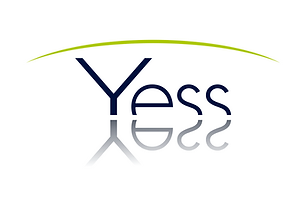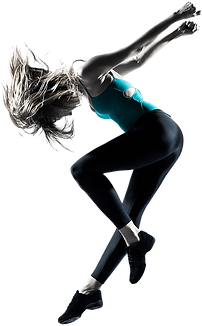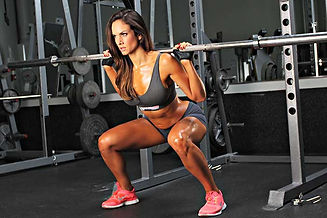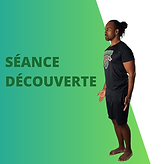
POURQUOI YESS-FITNESS ?
- Ouvert 365j par an.
- Encadrement professionnel.
- Remboursé par les caisses maladies.
- Notre circuit training E-gym (36 minutes).
- Équipement performant PRECOR.
- Nos bilans de santé.
- Nos programmes personnalisés pour vous.
- Votre propre application avec plus de 300 cours, exercices.
- Plus de 1000 cours VFS par mois.
- Entraînez vous dans plus de 300 centres en Suisse
- Déjà abonné dans un autre club? Nous reprenons votre
abonnement. Jusqu’à 3 mois*. *(Avec nos abonnements 12 mois)



Bodybuilding programs to strengthen the legs. We offer here training plans to do sessions dedicated to a particular muscle, but you can very well mix and match to work all the thighs with the quadriceps and the hamstrings or the glutes with the calves...
Quadriceps program
Here is a special quadriceps program that should confuse your routine with little practiced but extremely effective exercises. The advantage of this program is that you do not need a weight room to train.
Dumbbell Squat Pulldown/Wide Back Jump
Stand your feet a little more than shoulder-width apart and hold a dumbbell in your right hand. Squat down and let the dumbbell drop to the ground, between your knees, then come back up by doing a dynamic jump while raising the load to shoulder height using the force produced by the legs. Land yourself gently and return to the low starting position. Do eight reps, switch hands and do eight more reps. Immediately follow with a series of wide back hops: Back hop on both feet and land gently with hips and knees slightly bent. Perform 12 jumps.
Single Leg Squat
On a stool or bench, stand on your right leg. Slowly squat on this leg as you descend as low as possible, moving the left foot forward and extending both arms overhead as you descend. Raise quickly, then squat again, this time moving the left foot sideways as much as possible. Return to a standing position and squat again, extending your left leg behind you and opening your right hip (remember to extend your arms vertically with each squat). These three moves count as one rep, do five reps, then switch legs.
Quick side lunges
Take two quick sliding steps to the right, flexing your knee and hip to touch the ground with your right hand (just outside your right foot). In a quick motion, do a vertical jump, then take two steps slide to the left, flexing the knee and hip to touch the floor with the left hand (just outside your left foot). Perform this movement eight times on each side.
Precede your training with a dynamic warm-up consisting of skipping, sliding steps and short, explosive sprints.

Hamstring program
Many bodybuilders are guilty of obvious neglect of their hamstrings and prefer to train their quadriceps more often and with more intensity. This is perhaps the application of the saying " out of sight out of mind but poor leg symmetry is only too visible to others! To fully develop this muscle set, it must be worked hard and regularly. You will then be rewarded with a development that will complement the aesthetics of the legs, giving them class, power and grace. For this purpose, it may be wise to completely separate quadriceps and hamstring work into separate sessions, allowing you to put more effort into each. Your tools are those exercises and the principles that have worked for so many other practitioners before you. Ready to truly reinvigorate your session and achieve muscular, athletic legs? Let's go !
Program 1
The straight leg deadlift is to the hamstrings what the bench press is to the pecs. This strenuous exercise involves the back and can be quite heavy. Stay strict on the execution as the risk of injury is high with this move. Classically, take the barbell with an overhand grip, hands shoulder-width apart and knees slightly bent. The hamstrings are long muscles and that means you have to stretch them well. Avoid locking at the top and focus on your hamstrings to feel their contraction throughout the movement.

Program 2
Another fundamental exercise to work the muscles of the back of the thigh: the front lunges which you can perform with or without weights if you want to do high reps. As with all bodybuilding exercises, it is the form of execution that counts. It's not worth rushing it to get heavier. To better stretch the hamstrings, take a fairly long stride. First take a step forward, then down and finally back: these are three very distinct movements. The front leg should carry most of the weight and the hamstrings of this leg should provide the power to come back up. The back leg is only used for balance.

Program 3
If your hamstrings are stagnant, you'll probably respond well to this high rep workout. To have slightly different stimuli, also attack these muscles like the pectorals, that is to say from several angles. To optimize development, try to work all the bundles of the hamstrings in each session. Stretching being a top priority, it will be very important to get the blood flowing to the muscles, first by warming up and then by stretching.

Buttocks program
Posterior, buttocks, booty, ball, firecracker… whatever you call it, many people are obsessed with their glutes. Girls, in particular, are very concerned about the lower body line, because genetically this part of your anatomy tends to accumulate more fat than men. It's often panic when summer approaches and when it's time to buy a swimsuit. To give a little more roundness and tone to your Levi's, here are some tips and a 3-week training cycle to build your glutes.
Workout tips for glutes
Before working the glutes and thighs, always warm up for 5 to 15 minutes to activate the circulation of the lower limbs. Then continue with light stretching: this will help prevent injuries and improve your flexibility. Get mentally in tune with the muscle when working the legs. Concentrate on a muscular work done in full amplitude without ever rushing the form. Perform each repetition in a measured and controlled manner. Before moving on to compound exercises like the squat and the front lunge, try to pre-fatigue your quadriceps by doing an exercise like the leg extension. This will warm up the knee joints while stimulating the quadriceps.
For forward lunges on the move, lift the back leg and contract it before bringing it forward to take the next step. For those who have pounds to lose in the buttocks, perform one or two sessions per week and in the form of a giant series, moving from one exercise to the next without rest time. This will keep your heart rate elevated, which will allow you to burn more calories. For those who have flat and soft buttocks, take a maximum of 2 minutes of rest. In any case, take a load that allows you to force and have difficulty completing the last two repetitions of the series.
When performing the squat, keep your feet slightly more than shoulder-width apart and turned outward. This position is perfect for targeting the glutes and inner thigh, two problem areas for many women. Although lumbar extensions are generally considered an exercise for the lower back, it can also be used for the glutes: energetically contract the glutes when going up and down. For lunges, the bigger the step, the more the glutes and hamstrings will be used. Conversely, the shorter the step, the more the quadriceps will be used.
Program 1

Program 2

Program 3
Calves program
Many bodybuilders consider the squat to target the quadriceps primarily; some know, however, that it also mobilizes the hamstrings and glutes. On the other hand, very few people think about the role that the calves play in carrying out this exercise. World squat champions are well aware of the importance of calves for heavy work. When coming up from the squat position, the extension is not only at the hips and knees, but also at the ankles. The twins (muscle at the back of the leg that looks like an upside-down heart) have an essential function here. In addition, it is also necessary to think about the stabilization of the body which is ensured by the soleus throughout the exercise. If you are used to neglecting your calves, quickly review your approach. They have to gain in strength and not mold them just so that they have an effect when you are in shorts. Forget everything you've heard about high sets for calves: it's time to train them with heavy weights so their strength can trickle down to your squat performance. Here is a calf training program to get powerful calves.
Standing calves
There is no need to wait for the calf machine to be released. Settle into the squat cage to do heel raises that better replicate the squat motion. Adjust the pins so the bar is at shoulder level or slightly lower. Place two 10 kg discs side by side (or a wooden block) about 45 cm in front of the bar. Load the bar enough to do 5-6 reps at most. Engage the shoulders under the bar and place your feet so that the toes rest on the edge of the discs and the heels touch the ground. Then, raise your heels as high as possible. The bar will have to slide permanently against the uprights of the rack: it is necessary to push the body upwards and backwards in the direction of the vertical uprights. Let the heels slowly come back down to the ground and start again. At the end of the last set, do as many partial reps as possible, until you are almost unable to lift your heels off the ground.
Seated calves
You have the choice between the machine to work the seated calves but if you do not have this device which will surely be the case if you train at home; you can do this movement with a simple barbell and a bench. If you have a squat cage, even better! Place a horizontal bench in the squat cage and put the two 10 kg discs about 30 cm in front of the bench. Adjust the pins so that the bar rests on them, ie at the same height as the knees or slightly lower when sitting on the bench. The bar on the thighs, about ten centimeters behind the kneecaps (for better comfort, put a towel on your thighs), the feet on the discs and the lowered heels, raise the heels as high as possible. Slowly lower them back down and start again. Do partial reps at the end of your last set.
